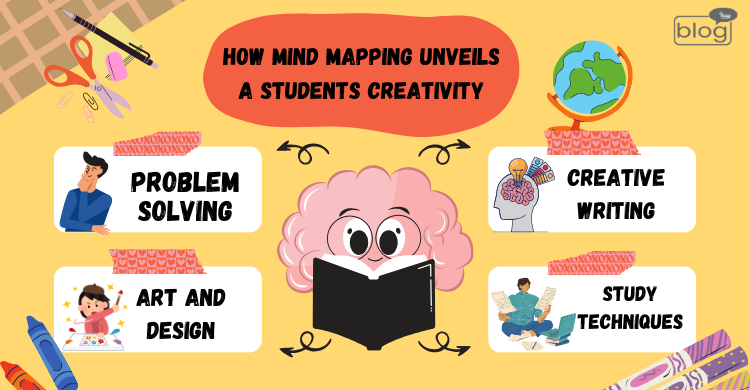Have you ever felt that something is missing in our education system? Is our learning system capable of bringing out the creativity inside the students? In this fast-paced era, creativity is proving to be a valuable skill. Students often find it hard to unlock their creativity. Here, mind mapping works as a very useful tool.
What is mind mapping?
Mind mapping is a method developed by Tony Buzan, which is a visual representation of ideas through images, colors, and diagrams. The concept of mind mapping is to avoid linear note-taking and use creativity to connect thoughts with a main idea or concept. Using mind mapping, one can form a “map” of their ideas. It also reflects one’s thought processing and creativity.
Breaking free from linear thinking
The traditional way of studying and brainstorming often relies on a linear structure. This can sometimes restrict ideas. On the other hand, mind mapping encourages freeform thinking. Practicing mind mapping, students can explore different angles of ideas by starting from a central idea and then branching the idea out in different directions. Mind mapping can lead to unexpected connections between ideas, fostering creativity.
Encouraging divergent thinking
Divergent thinking is the ability to generate multiple ideas. It is at the core of creativity. Mind mapping creates a space for divergent thinking. It allows students to jot down ideas without the constraints of structure. Through mind mapping, even a single keyword can trigger a cascade of related ideas. The thought process can lead to innovative solutions or unique perspectives on a solution.
Visual stimulations for creative insights
Elements like colors, symbols, and images are integral to mind mapping. These elements engage the brain’s visual cortex, enhance memory retention, and spark creative insights. For example, a student making a mind map for any particular topic may use images and colors to describe the components of the topic and symbols to portray the connections of the topic with other ideas, which results in a better narrative.
Overcoming creative blocks
Every person working in the creative sector or student encounters creative blocks. Mind mapping serves as an amazing tool to overcome this situation. Mind mapping breaks down daunting tasks into smaller, manageable parts, and students handle each component step by step. The act of connecting ideas visually often leads to an ‘aha’ moment, breaking the creative block.
Collaboration and creativity
Mind mapping is a great tool for collaboration. For instance, some students working on a project can use mind mapping to collaborate on their ideas. Such group mind-mapping sessions often come up with more innovative ideas, creating synergy among the students’ creativity. Mind mapping fosters an environment for shared creativity with group brainstorming sessions.
Applications in education
The versatility of mind mapping makes it an excellent tool for education. Here are some examples:
Creative writing: Students can use their creativity to develop different characters, plots, and arcs in their storytelling with the help of mind mapping.
Problem-solving: Mind mapping provides different solutions for problems from which students can choose the most effective one.
Study techniques: Mind maps help students summarize and visualize solutions. This makes it easier to understand and recall complex concepts.
Art and design: Mind mapping can help aspiring artists brainstorm ideas for projects and experiment with styles and designs.
Building confidence in creativity
Mind mapping gives students a boost in confidence. Seeing their ideas shaped on paper, they can recognize the depth and breadth of their creativity. This sense of accomplishment encourages students to take on new challenges.
Mind mapping is not just a mere technique; it’s a mindset. It brings out the student’s creativity and encourages them to explore new ideas and shape them visually. In a world that increasingly values innovation, mind mapping equips students to stand out and succeed. So, the next time you are looking for a way to spark creativity, just start mapping and get amazed by the outcomes.
To read these types of blogs, click here.
Writer
Zabin Tasmin
Intern, Content Writing Department
YSSE

